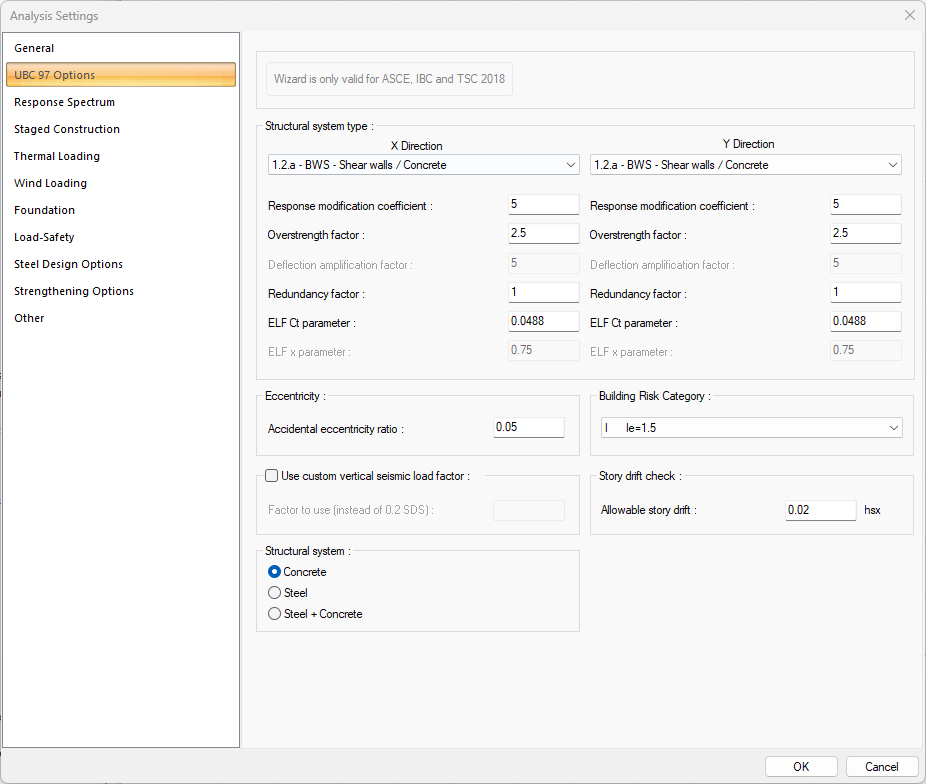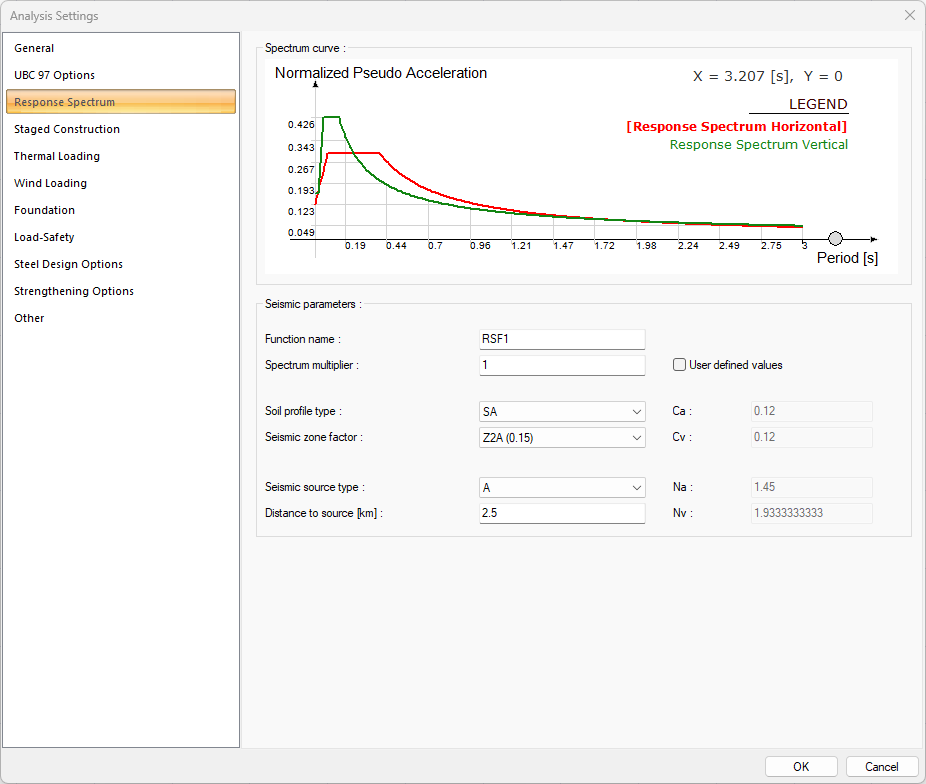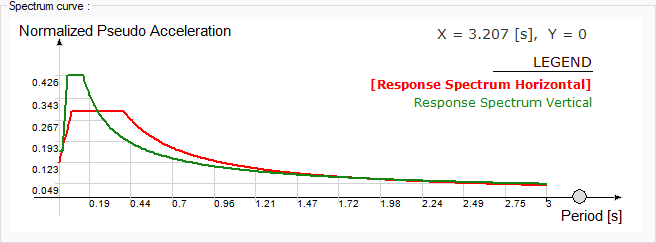UBC 97 Uniform Building Code
UBC 97: 1997 Uniform Building Code
UBC 97 refers to the 1997 Uniform Building Code, one of the world's most widely used model building codes.
Download ideCAD for Seismic Code Design with UBC 97
Analysis settings that vary depending on the UBC 97 are explained in detail.
UBC 97 Options Tab in ideCAD Structural

Specifications |
|---|
Structural system type  The type of structural system for X and Y direction is selected in accordance with the design of the building. |
Response modification coefficient  It is the response modification coefficient value. This row is automatically refreshed when the structural system type is chosen. |
Overstrength factor  It is the strength excess coefficient value. This row is automatically refreshed when the structural system type is chosen. |
Redundancy factor  It is the redundancy factor value. This row is automatically refreshed when the structural system type is chosen. |
ELF Ct parameter  It is the ELF Ct parameter. This row is automatically refreshed when the structural system type is chosen. |
Accidental eccentricity ratio  The eccentricity ratio to be used during the analysis is given as a percentage. |
Use custom vertical seismic load factor  If checked, the custom vertical seismic load factor which entered in "factor to use (instead of 0.2 SDS)" line is used. |
Structural system  If the building block consists of only concrete elements, Concrete; if it consists of only steel elements, Steel; Steel + Concrete option is selected if it consists of concrete and steel elements. |
Building Risk Category  Building risk category value is selected from the list according to the purpose of use of the building. |
Story drift check  Allowable story drift value is entered. |
Response Spectrum Tab

Specifications |
|---|
Spectrum curve  The spectrum curve resulting from the settings is shown. |
Function name  The name of the spectrum function. |
Spectrum multiplier  Factor of spectrum function. |
Soil profile type  Soil profile type is selected for the response spectrum. |
Seismic zone factor  Seismic zone factor value is entered for the response spectrum. |
Seismic source type  Seismic source type is selected for the response spectrum. |
Distance to source [km]  Distance to source value is entered for the response spectrum. |
User defined values  If this option is selected, parameters such as Ca, Cv, Na and Nv become active. |
Ca/Cv  Seismic coefficient value is entered for the response spectrum. |
Na  Near source factor use in the detemination of Ca for the response spectrum. |
Nv  Near source factor use in the detemination of Cv for the response spectrum. |
Download ideCAD for UBC 97
Next Topic
Related Topics
